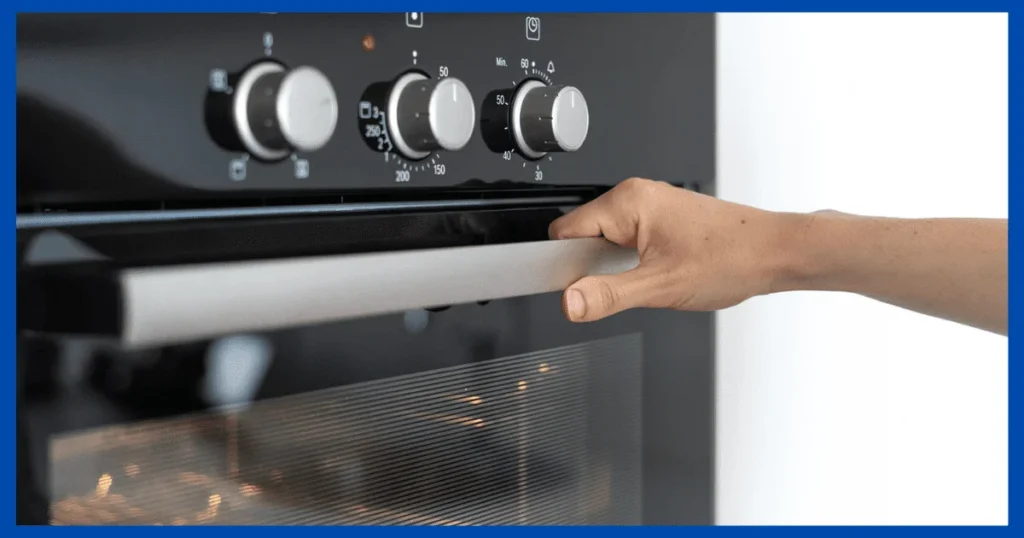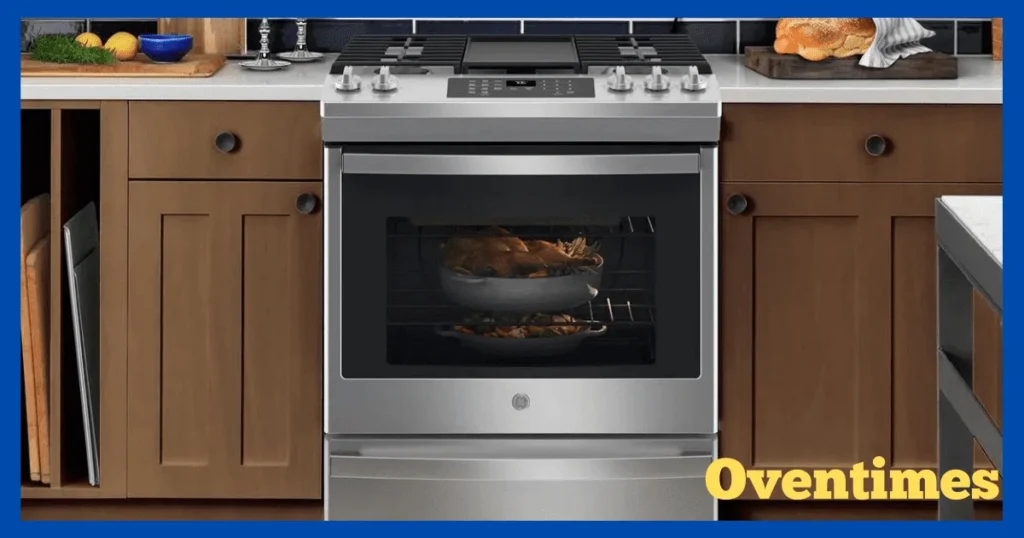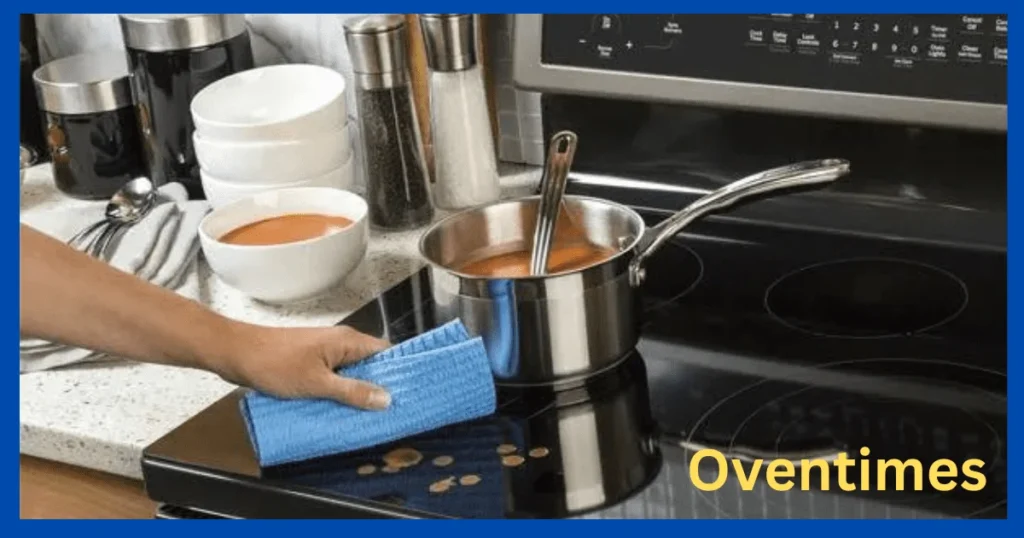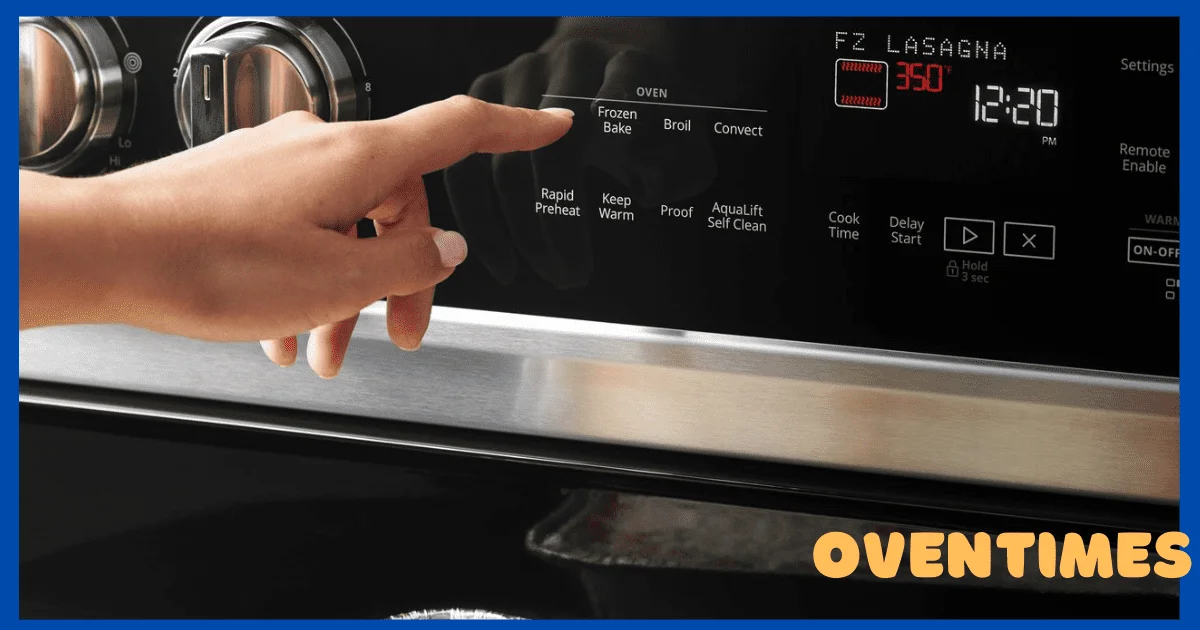Self-cleaning ovens offer a convenient way to clean your oven without harsh chemicals. General Electric (GE) produces several models with this feature. But how does the self-cleaning function work? Does a self-clean oven turn off on its own?
The short answer is yes. GE self-cleaning ovens are designed to automatically turn off when the cleaning cycle is complete. Read on to learn more about how self-cleaning works and the automatic shut-off function.
How Does a Self-Cleaning Oven Work?

GE’s self-cleaning ovens use high temperatures to burn off baked-on grease and residue. During the cleaning cycle, the oven reaches temperatures of over 800°F, hot enough to ash food debris and grime.
A self-cleaning cycle typically takes 2-4 hours to complete. GE ovens recommend running a cleaning cycle every few months to keep your oven fresh. Here are the steps in GE’s self-cleaning process:
- Pre-Clean Prep: Remove racks, pans, foil, and other removable items. Wipe down excess grime beforehand.
- Initiate Cleaning: Select the self-clean cycle on your GE oven control panel. Newer models have dedicated cleaning buttons.
- Door Lock: For safety, the oven door will automatically lock when the cleaning cycle begins.
- High Heat: Internal heating elements will raise the oven temperature to well over 700°F. This extreme heat incinerates debris.
- Cool Down: With the cycle complete, the oven cools and unlocks the door. This can take over an hour. Wipe away any leftover ash.
GE’s self-cleaning technology uses high heat to clean without detergents or scrubbing. But is it safe?
Is GE’s Self-Cleaning Oven Safe?
GE tests their self-cleaning ovens extensively for safety. Here are some key safety features:
- Automatic Door Lock – The oven door locks closed once the cleaning cycle starts. This prevents burns from hot steam release.
- ** Temperature Regulation** – Internal sensors maintain the ideal cleaning temperature. Oven temperatures will not exceed design specifications.
- Ventilation – GE ovens include a vent fan that runs during and after cleaning to release hot air.
- Insulated Interior – The oven maintains the heat inside, while keeping external surfaces safe to touch.
- Automatic Shutoff – When fully cleaned, the oven automatically turns off heating elements.
With proper precautions like removing racks and prep, GE’s self-cleaning mode offers a hands-free way to remove baked-on grime. Always check your owner’s manual for the latest safety tips.
Do GE Self-Cleaning Ovens Turn Off Automatically?
Yes, GE self-cleaning ovens are designed to automatically shut off at the end of the cleaning cycle.
Here’s how the automatic shutoff works on GE models:
- The oven controls allow you to program a self-clean time, usually 2-4 hours.
- Near the end of the programmed cleaning time, the oven will reach its peak temperature around 800°F.
- Once the cleaning cycle is complete, the oven will automatically stop heating.
- The oven fan continues to run to ventilate and cool down the oven.
- After the cool down period, the oven door will unlock itself.
This allows the oven to run a full cleaning cycle and cool down without monitoring. GE’s auto shutoff is a safety feature to prevent overheating and leave you with a clean oven.
Some models will beep when finished, while others require checking the oven’s display for a “Clean Complete” notification. Consult your user manual for exact shutoff procedures.
Now let’s look at how specific GE oven models handle automatic shutoff after self-cleaning.
Self-Cleaning Shutoff by GE Model

GE manufactures several different oven product lines. Here are details on the self-clean shutoff process for some popular models:
GE Profile Ovens
- Cleaning Time – GE Profile ovens allow you to set a self-clean time of 2, 3, or 4 hours.
- Automatic Door Lock – The oven door will lock immediately when the cleaning cycle begins.
- Shutoff – Once the set clean time is complete, the GE Profile oven will turn off automatically. It will not continue heating.
- Ventilation – A fan runs for an additional 30 minutes to cool the oven down after shutdown.
- Unlocking – After cooling, the Profile’s oven door will unlock automatically. The oven is ready to use again.
GE Cafe Series
- Cleaning Mode – Cafe models have a dedicated “Self Clean” mode with standard 3 or 5 hour run times.
- Heat Off – When the timer expires, the Cafe oven will automatically turn off the heating elements.
- Ventilation – The convection fan will continue for 1 hour to cool the oven.
- Unlock – After 1 hour of ventilation, the Cafe oven unlocks the door automatically.
GE Electric Range
- Cleaning Setting – GE electric ranges have a “Self Clean” option labeled in the control display.
- Automatic Lock – Initiating Self Clean will lock the door and start the heating process.
- Shutoff and Cool – Once the timer expires, the range turns off heating and runs the fan for 1 hour to cool.
- Unlock – After the cool down time, the electric range will unlock the oven door automatically.
As you can see, General Electric ovens are designed to turn off heating at the end of a self-clean cycle. This prevents overheating issues. Letting the oven cool and unlock are the final steps.
Refer to your owner’s manual for the latest instructions. Methods can vary by model year and oven style.
Is It Safe to Run a Self-Cleaning Oven Overnight?
GE understands that long self-clean cycles are inconvenient. But is it safe to run self-clean mode overnight or while away?
There are a few factors to consider:
- Automatic Shutoff – As covered, all GE ovens turn themselves off when the timer expires. So there’s no risk of indefinite heating.
- Cool Down Time – Ovens can still be very hot right after auto shutoff. GE’s cool down periods help dissipate heat before unlocking.
- Oven Ventilation – Proper ventilation routes hot air outside. Be sure your oven’s vents aren’t blocked by cabinetry or debris.
- Kitchen Fire Risks – Self-clean ovens generate extreme temperatures. Avoid leaving them unattended around flammables.
- Locking Door – GE’s door locking prevents tampering but also prevents quick entry in an emergency.
Overall, it’s likely fine to start a self-clean cycle before going to bed. But be sure to fully prep your oven according to its manual. Avoid obstructions around the oven vents.
For maximum safety, avoid running self-clean when the home is empty or overnight. The potential risks may outweigh the convenience. Consider alternative cleaning methods like oven liners to make occasional self-cleans less burdensome.
Troubleshooting When a GE Oven Won’t Turn Off After Self-Clean
In rare cases, a GE oven may not automatically turn off at the end of the cleaning cycle. Here are some troubleshooting tips:
- Check Error Codes – GE ovens will often flash an error code in this scenario. Write down any letter/number code before resetting.
- Reset Oven – Switch the oven’s circuit breaker off/on again. Then attempt to cancel self-clean mode through the controls.
- Try Manually Unlocking – If the clean timer expired, you may be able to unlock the door manually using the override release. Check GE oven manuals for instructions.
- Let Oven Cool – If the oven remains hot inside, allow a few hours for the oven to cool down with the door closed. Avoid burns.
- Call for Service – For persistent issues with the self-clean shutoff, contact GE customer support online or schedule a visit from an authorized technician.
Avoid attempting to override or tamper with door locks yourself. This may lead to injury or oven damage. Get professional help anytime an oven fails to operate properly.
GE Oven Cleaning Tips Beyond Self-Clean Mode

While the self-clean feature is handy, overusing it can wear down your oven prematurely. Here are some alternative cleaning tips:
- Use Preventative Liners – Line the bottom of your oven with foil or a baking liner to catch drips and prevent build up. Change liners periodically.
- Clean Spills Quickly – Don’t let spills bake on. Wiping food spills promptly makes cleaning much easier.
- Scrub With Baking Soda – For light soil, make a baking soda paste with water. Apply and let sit before scrubbing and rinsing.
- Steam Clean – Place a small bowl of water inside and run the oven at low temp for moisture to loosen debris.
- Squeeze Sponge – For narrow spaces like racks, a damp sponge with scrubbing side can remove grime.
- Replace Rack Coatings – GE’s oven racks have a porcelain coating. Replace racks once coating wears down to prevent rusting.
Any time oven grime seems extreme, run a self-clean to reset. But regular light cleaning prevents the need to use extreme temperatures.
How to Keep a Self-Cleaning Oven Smelling Fresh
The high heat of self-clean can leave behind odors inside your oven. Here are tips to keep your GE oven smelling fresh after cleaning:
- Ventilate During and After – Run the oven fan during and after the self-clean cycle to clear air. Open windows to ventilate.
- Baking Soda Inside – Put an open box or bowl of baking soda in the oven after self-cleaning. Let it sit overnight to absorb odors.
- Citrus Peels – Place citrus fruit peels (lemon, orange, lime) in the oven after cleaning. Heat at 300°F for 20 mins to freshen air.
- Vinegar Wipe Down – Use full-strength white vinegar or a mix of 50/50 water and vinegar to wipe down oven surfaces.
- Essential Oils – Apply a few drops of lemon, eucalyptus, or purification essential oils onto a cloth. Wipe inside the oven to freshen.
- Activated Charcoal – An open bowl of activated charcoal left in the oven can help absorb lingering odors after cleaning.
Avoid harsh chemical oven cleaners as they can leave unwanted smells behind. With natural methods, you can safely freshen your GE oven after self-cleaning.
Conclusion
GE’s self-cleaning ovens offer an easy way to eliminate baked-on grease and restore your oven’s interior. Key to their safe function is the automatic shutoff – GE ovens turn themselves off when the cleaning cycle finishes, preventing overheating.
While quite convenient, self-cleaning modes should be used responsibly due to the intense heat involved. Always check GE appliance manuals for the latest usage tips and safety steps. Proper ventilation, prep, and component care allow a self-cleaning oven to operate most effectively.
Supplementary cleaning between self-clean cycles is recommended. With regular light cleaning, owners can limit how often they need to use extreme temperatures. GE also offers alternative cleaning techniques like steam clean to reduce harsh chemical usage in ovens.
Frequently Asked Questions
Here are some frequently asked questions given below:
Should I clean my oven before starting self-clean?
Yes, it’s best to wipe away any loose debris and grease before self-cleaning your GE oven. This prevents excessive smoke or burning smells. Remove all racks and accessories too.
How long does the self-clean cycle last?
GE ovens allow you to select a self-clean time, typically 2, 3, or 4 hours. The time needed depends on how soiled your oven is. Run the minimum recommended time first.
Can I leave my racks inside during self-cleaning?
No, remove all racks, pans, foil, and other accessories before self-cleaning a GE oven. The extreme heat can damage racks and cause issues.
Why does my oven door lock during self-clean?
For safety reasons, GE ovens automatically lock the door when self-clean is active. This prevents burns from the high heat inside, which can exceed 700°F.
How do I stop a self-clean cycle on my GE oven?
Unfortunately you cannot manually stop a self-clean on most GE models once started. The door lock prevents opening the oven until the cycle completes and it cools.
